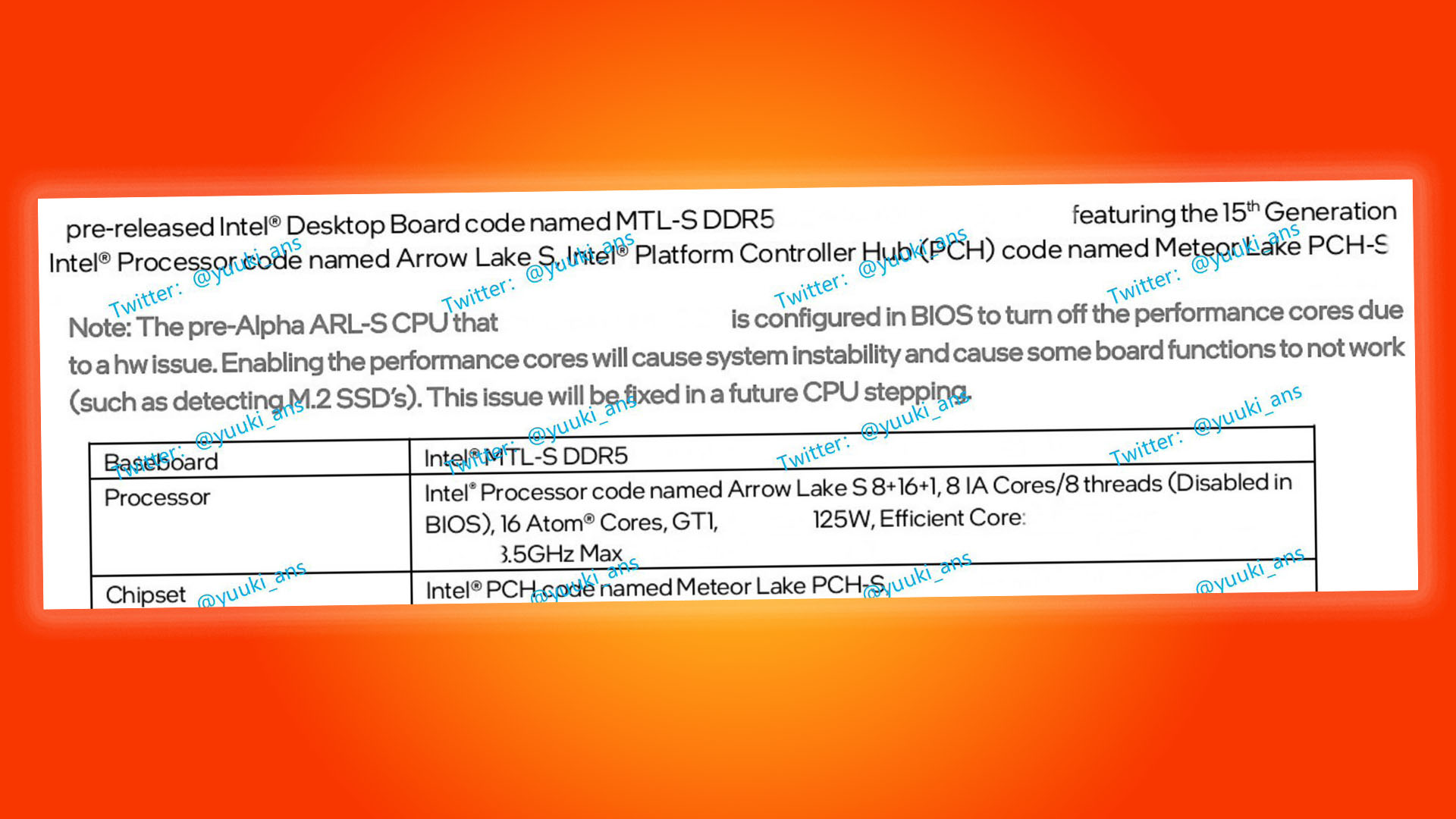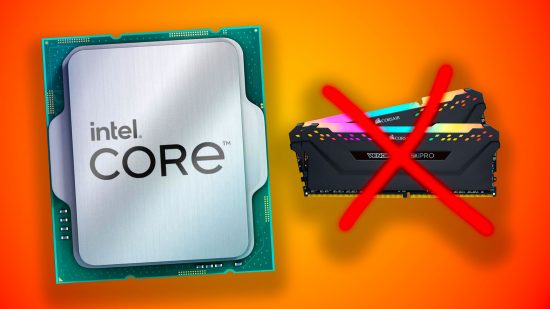A bunch of Intel 15th-gen specs have just leaked online, not only confirming that Intel is dropping DDR4 support from its forthcoming CPUs, but possibly also ditching Hyper-Threading. Details of a pre-Alpha desktop Intel Arrow Lake CPU have been revealed, stating that DDR4 support is now being discontinued, while also showing a CPU kitted with eight P-Cores that can only handle eight threads.
All this marks a big change from the Intel CPUs found on our best gaming CPU guide, all of which support both DDR4 and DDR5 memory, and also support Hyper-Threading (HT). This clever tech has been around for a long time now, and it enables a CPU core to split the resources on its cores to handle two threads at once, meaning Windows sees each core as effectively two CPUs.
That doesn’t mean an eight-core CPU with Hyper-Threading is as fast as a 16-core CPU without it, but HT (and SMT on AMD CPUs) give a CPU a boost in heavily multi-threaded software.
The leaked document explicitly states that there is “no DDR4 support” on the Intel Arrow Lake platform, although 6400MHz DDR5 memory is now officially supported, a big bump from the 5600MHz top frequency that’s officially supported by 14th-gen CPUs, such as the Intel Core i5-14600K. That’s not a big deal, though, seeing as most motherboards with Z-series and B-series chipsets enable you to run XMP memory profiles with much faster clock speeds anyway.

The leak came in the form of a document posted on X (formerly known as Twitter) by YuuKi_AnS, which has since been deleted, but has been preserved by the wccftech folks. Other goodies in the CPU specs include USB 4 support, as well as 20 PCIe 5 lanes – 16 for a GPU and four for an M.2 SSD, plus a further four PCIe 4 lanes. Meanwhile, the actual CPU detailed in the document looks like a 24-core CPU in the same league as the current Core i9-14900K. It’s described as having eight IA cores, with IA standing for Intel Architecture, which we assume are the P-Cores, along with 16 Atom cores running at 3.5GHz, which make up the E-Cores.
Interestingly, though, the eight IA cores are only listed as having eight threads, which implies that there’s no Hyper-Threading support. Comparatively, the P-Cores on the latest 14th-gen Intel CPUs all support Hyper-Threading, so eight P-Cores can execute 16 threads. The document also notes that you have to disable the P-Cores in the BIOS on this pre-Alpha sample, as it causes issues with the motherboard, such as detecting M.2 SSDs. It adds that “this issue will be fixed in a future CPU stepping.”
This doesn’t necessarily mean that Intel 15th-gen processors will be slower at multi-threading, though. In 2023, Intel filed a patent outlining the “methods and apparatus to schedule parallel instructions using hybrid cores”, and it could be that such an advanced thread scheduler system basically makes Hyper-Threading in its current form redundant.
Does this matter for gamers? Not really. Most of the latest games will struggle to max out an eight-core CPU, let alone a 24-core processor with Hyper-Threading. However, the apparently confirmed lack of DDR4 support is the last nail in the coffin for this aging memory tech – if you want to upgrade in the future, you’re going to need to jump into the DDR5 pool. If you’re already looking to buy some new memory, check our our best gaming RAM guide.
